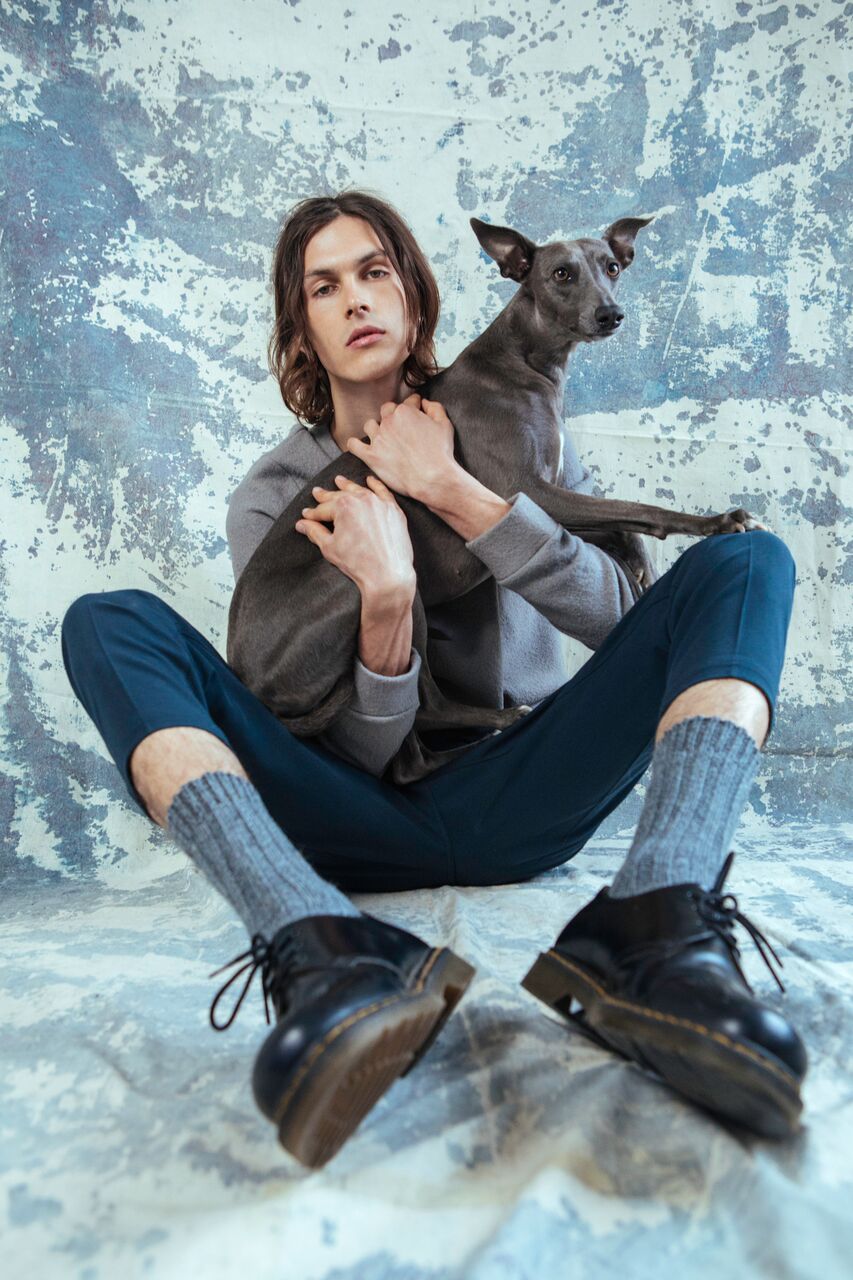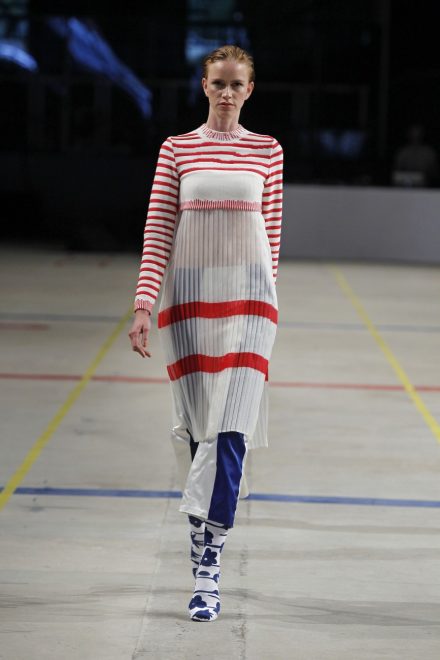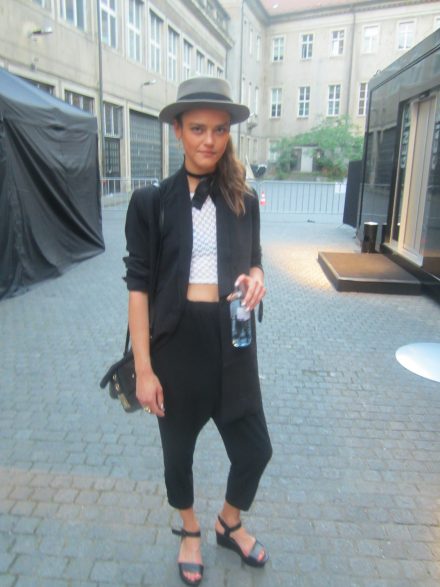Hund Hund is an ethical Berlin based brand that creates sustainable fashion for men, women and… dogs! Founded by Isabel Kücke and Rohan Michael Hoole, each product is ethically and transparently produced in an aim to create a “minimal wardrobe” that reflects the demands of conscious creatives by using quality materials. Œ caught up with the couple at their studio to hear about the future of this emerging brand and learn about the ambitious concept.

Œ: A brand for men, women and dogs, when and how did you decide to cater to canines too?
Rohan: Iz and I met in India. We used to talk about the brand – at the time it was just a germ of an idea in our heads, while going for long walks through Bombay. We had a pack of street dogs had befriended us and followed us around,we would bring them food each morning. Basically at one point Isabelle was not sure whether she wanted to start a fashion label, even though she had studied design, and already had a company doing production, so she was like “fine, ‘let’s do make a brand, but under one condition: I get to make stuff for dogs as well.” And that was the deal!
Œ: You studied at UDK in Berlin, and now Hund Hund is based here too, what drew you to the city?
Rohan: We did! We are a couple.
Isabel: The reality is we were both working in India: Rohan had been working there for over seven years, and I had opened a production company doing embroidery for other labels. I had been there for three years and actually really enjoyed my life in India, but Rohan was ready to go. Working and living in a third world country shows you the other side of the fashion business. So we decided we wanted to do something new.

Œ: You consider yourselves to be an ethical brand: you work with sustainable fabrics such as tencel jersey and your production is based in Europe. How else do you go about fashion ethically as a brand?
Rohan: Well, for starters, I think being ethical is a commitment and a process. I think in fashion,most problems have very deep roots, and that the solutions aren’t obvious. There are several things that we do. For one, we practice radical transparency. We believe this to be meaningful because people don’t know about the pollution caused by clothing production. Because everything is invisible until it’s on a rack, and people generally don’t know where their products come from. Some big brands appear to be trustworthy, but then if you flip the label, you find out it’s made in Bangladesh, where you have no idea what the working conditions in the factory, or of the farmers for that matter, are.


Œ: Why is this important?
Rohan: I feel that by being transparent we invite a conversation with our customers. That way it’s not just us being ethical, but it becomes a dialog between the people who want to be more ethical through fashion, and us: it becomes a movement. The life expectancy of ordinary cotton farmers in India is 45 years because the chemicals are so toxic –most people are unaware that fashion is the second most polluting industry after oil and gas. By encouraging the use of organic cotton, farmers have the opportunity to shift from a chemically intensive production process, which is super damaging for their health, to one that doesn’t involve any chemicals.
Œ: Do you feel that bigger corporations in the industry should follow suit?
Rohan: We are “nobody’s”. That being said, yes! And there is definitely a movement forming around a new generation of more ethical brands. For a long time people have been searching for a minimal wearable brand with quality materials which actually reflect their values.
Œ: How do you incorporate functionality into your designs?
Isabel: For me it’s really important to feel comfortable in them, so I do a lot of pieces with wide legs for women, elastic waistbands, and big pockets!

Œ: How often do you create new lines and products?
Rohan: We very much try to create things that aren’t “on trend” in the way that you couldn’t wear them next year, or the year after that. I think that’s really important actually: if you can buy something that you’re going to wear twenty times or fifty times rather than three times, it has a bigger impact.
Œ: What are your favorite products/pieces currently?
Isabel: The green jacket we just shot! We put the picture up and everyone was just like “where can I buy this?”. I think we’re also both pretty obsessed with our pants.

Œ: Where do you draw your inspiration from?
Rohan: We use a lot of dead stock because we think it’s a nice way to cut down our footprint, fabric that’s no longer in production, which is better value for us and our customers. Starting with these fabrics makes our design process very utilitarian.
Isabel: Yeah, it’s mostly the fabrics. I mean, when you’re a creative person you are inspired by everything, but we are often putting different fabrics together and getting a feel for,and sense of them. Most of the time we order the fabric before we even have the design!
Rohan: And that’s because we care a lot about haptics, the way a garment feels on your skin is just as important as the way it looks.

Œ: What is next for Hund Hund?
Rohan: We’re growing pretty quickly, but that also means we need to make more. Every time we have a little “win” we’re like “now we can do the coats!”. Knitwear worked really well for us, so this year we’re doing a knitwear collection which is three times as big. It will be out next month! We are also planning some really exciting things with recycled cashmere.
Isabel: And looking for a space to open a shop! So that might actually be the next step.
Rohan: Taking a virtual idea and putting it in the real world, would be a major step forward. A shop will allow us to meet people on a daily bases and talk to them about things we care about and the message behind our label.
Œ: That sounds exciting! Thank you for sharing all your inspiring thoughts, we look forward to seeing more from you in the future!




